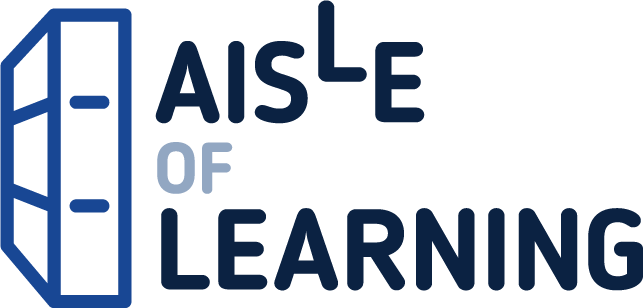Machine Learning: A Bayesian and Optimization Perspective, 2nd edition, gives a unified perspective on machine learning by covering both pillars of supervised learning, namely regression and classification. The book starts with the basics, including mean square, least squares and maximum likelihood methods, ridge regression, Bayesian decision theory classification, logistic regression, and decision trees. It then progresses to more recent techniques, covering sparse modelling methods, learning in reproducing kernel Hilbert spaces and support vector machines, Bayesian inference with a focus on the EM algorithm and its approximate inference variational versions, Monte Carlo methods, probabilistic graphical models focusing on Bayesian networks, hidden Markov models and particle filtering. Dimensionality reduction and latent variables modelling are also considered in depth. This palette of techniques concludes with an extended chapter on neural networks and deep learning architectures. The book also covers the fundamentals of statistical parameter estimation, Wiener and Kalman filtering, convexity and convex optimization, including a chapter on stochastic approximation and the gradient descent family of algorithms, presenting related online learning techniques as well as concepts and algorithmic versions for distributed optimization. Focusing on the physical reasoning behind the mathematics, without sacrificing rigor, all the various methods and techniques are explained in depth, supported by examples and problems, giving an invaluable resource to the student and researcher for understanding and applying machine learning concepts. Most of the chapters include typical case studies and computer exercises, both in MATLAB and Python. The chapters are written to be as self-contained as possible, making the text suitable for different courses: pattern recognition, statistical/adaptive signal processing, statistical/Bayesian learning, as well as courses on sparse modeling, deep learning, and probabilistic graphical models. New to this edition: Complete re-write of the chapter on Neural Networks and Deep Learning to reflect the latest advances since the 1st edition. The chapter, starting from the basic perceptron and feed-forward neural networks concepts, now presents an in depth treatment of deep networks, including recent optimization algorithms, batch normalization, regularization techniques such as the dropout method, convolutional neural networks, recurrent neural networks, attention mechanisms, adversarial examples and training, capsule networks and generative architectures, such as restricted Boltzman machines (RBMs), variational autoencoders and generative adversarial networks (GANs). Expanded treatment of Bayesian learning to include nonparametric Bayesian methods, with a focus on the Chinese restaurant and the Indian buffet processes. Presents the physical reasoning, mathematical modeling and algorithmic implementation of each method Updates on the latest trends, including sparsity, convex analysis and optimization, online distributed algorithms, learning in RKH spaces, Bayesian inference, graphical and hidden Markov models, particle filtering, deep learning, dictionary learning and latent variables modeling Provides case studies on a variety of topics, including protein folding prediction, optical character recognition, text authorship identification, fMRI data analysis, change point detection, hyperspectral image unmixing, target localization, and more
Machine Learning
$73.45
This textbook provides a comprehensive, unified perspective on machine learning, covering foundational theories and advanced techniques like deep learning.
Additional information
| Weight | 2.449 lbs |
|---|---|
| Dimensions | 19.1 × 5.7 × 23.5 in |
Machine Learning
$55.59
This book introduces students to key concepts and practical applications in machine learning using the R programming language.
Machine Learning: Theory and Practice provides an introduction to the most popular methods in machine learning. The book covers regression including regularization, tree-based methods including Random Forests and Boosted Trees, Artificial Neural Networks including Convolutional Neural Networks (CNNs), reinforcement learning, and unsupervised learning focused on clustering. Topics are introduced in a conceptual manner along with necessary mathematical details. The explanations are lucid, illustrated with figures and examples. For each machine learning method discussed, the book presents appropriate libraries in the R programming language along with programming examples. Features: Provides an easy-to-read presentation of commonly used machine learning algorithms in a manner suitable for advanced undergraduate or beginning graduate students, and mathematically and/or programming-oriented individuals who want to learn machine learning on their own. Covers mathematical details of the machine learning algorithms discussed to ensure firm understanding, enabling further exploration Presents worked out suitable programming examples, thus ensuring conceptual, theoretical and practical understanding of the machine learning methods. This book is aimed primarily at introducing essential topics in Machine Learning to advanced undergraduates and beginning graduate students. The number of topics has been kept deliberately small so that it can all be covered in a semester or a quarter. The topics are covered in depth, within limits of what can be taught in a short period of time. Thus, the book can provide foundations that will empower a student to read advanced books and research papers.
Additional information
| Weight | 0.422 lbs |
|---|---|
| Dimensions | 15.6 × 1.7 × 23.4 in |
Reviews
There are no reviews yet.












Reviews
There are no reviews yet.